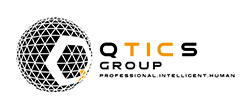In his presentation at the MedTech Minds conference at Pécs, Attila Juhász, consultant at SAASCO Ltd. delved into the global procedures for introducing medical devices to the market. Attila, with his extensive experience in regulatory affairs, outlined the stringent compliance requirements that vary significantly across different regions. His presentation highlighted the critical steps manufacturers must navigate to ensure their medical devices meet safety and efficacy standards. Attila provided insights for stakeholders aiming to launch medical innovations worldwide.
When we think of medical device development, the whole world is ours. While there is strict legislation on medical devices in different regions, the basics are pretty much the same, from China to the US.
Consequently, there is an aspiration to synchronize these specifications. A significant player is the IMDRF international regulatory forum, which operates with an advisory nature, but a lot is drawn from their work. They have developed basic guidelines, some specifically used in the MDR.
More interestingly, the MDSAP or Medical Device Single Audit Program will be a regulatory-level body that does not exist yet. In the future, regions or countries that have signed up for this scheme will have a single, standardized certification process. Once they have an audit, they will have access to the whole world.
Unfortunately, this does not include the whole world. The core members are Australia, Brazil, Canada, Japan and the USA. There are candidates for membership, but the European Union is only an observer in this system, and they are likely to join in the future.
What is considered a medical device?
The first question is, what exactly is this gadget in my hand? A medical device, a drug, a machine, or both?
These are fundamental issues. Whether we should get into medical technology depends on whether the device at hand is a medical device. There is a definition for this, which is relatively uniform around the world, although there are subtle differences. The European definition of a medical device is that it is intended by the manufacturer to be used on a human being for therapeutic or diagnostic purposes.
IBD tools test samples from the human body. Some devices are not considered drugs because they work based on physical action. Drugs are a different matter, but there are quite a few overlapping categories.
Often, we call things medical devices, even if they are not devices at all. Softwares, for instance, belong to two separate categories, and in some cases, it is also a high-risk category.
A dental filling is a medical device, while toothpaste is a cosmetic product. However, the toothpaste I use is a medical device because the manufacturer incorporated ingredients that prevent tooth decay.
Often, you take two products off the same shelf, and one is considered a cosmetic product, while the other is a medical device. From a strategic point of view, it is crucial to be clear about what we are dealing with because the pathways could lead us in very different directions.
Minimizing the risks
The next step is to set up the regulatory strategy, a task we love at Qtics. Start-ups usually don't know what to do. They don’t know the rules, the regulatory authority, how to classify the device or the pathways of approval, and what an application should look like. We need to address these issues as soon as possible. The best strategy is one that provides a roadmap and can be as compact as one document.
Medical device regulation is centered around two aspects. One is safety, and the other is performance. Objective clinical data must demonstrate that a medical device is fit for the purpose for which it was intended by the manufacturer.
If I buy a saw or a medical device, they both have target marks on them. However, if I take a saw into the operating room to use it on a bone, I need clinical data to prove that that saw is the right tool.
Safety is mostly about risk management, but we also need to look at the risk versus the clinical benefit. We need to carry out a risk analysis because that ratio has to be right, but it is for the experts to decide whether it's the right ratio in a particular case. In medical technology, there is no risk management without ISO 14971, so it's worth getting to grips with this standard as soon as possible.
The other significant criterion to examine is performance. Unfortunately, in most cases, especially if the device is a novelty, and there are no similar devices on the market, large clinical trials have to be carried out, which can be extremely costly.
Find out about the next steps of the process in Part2
